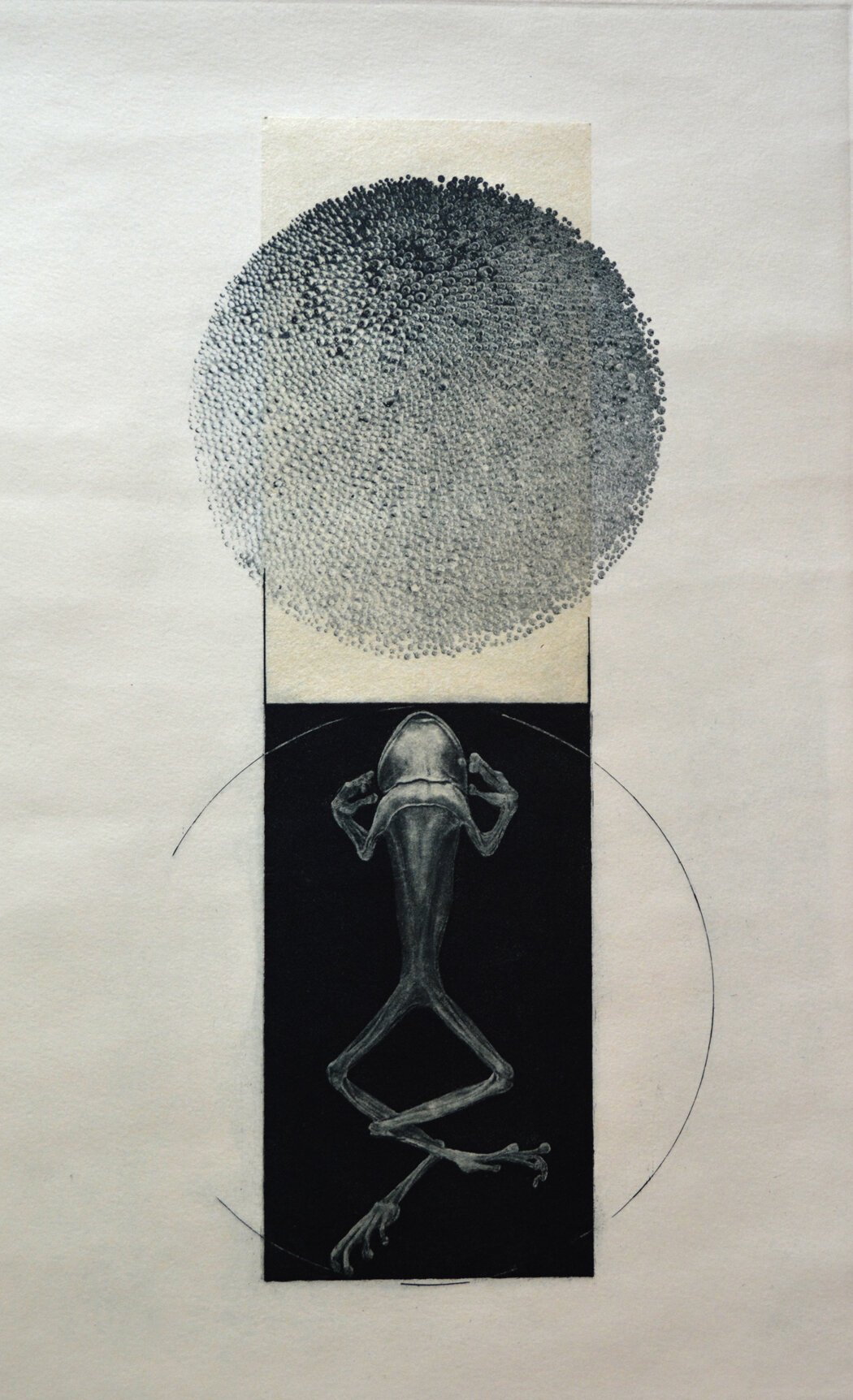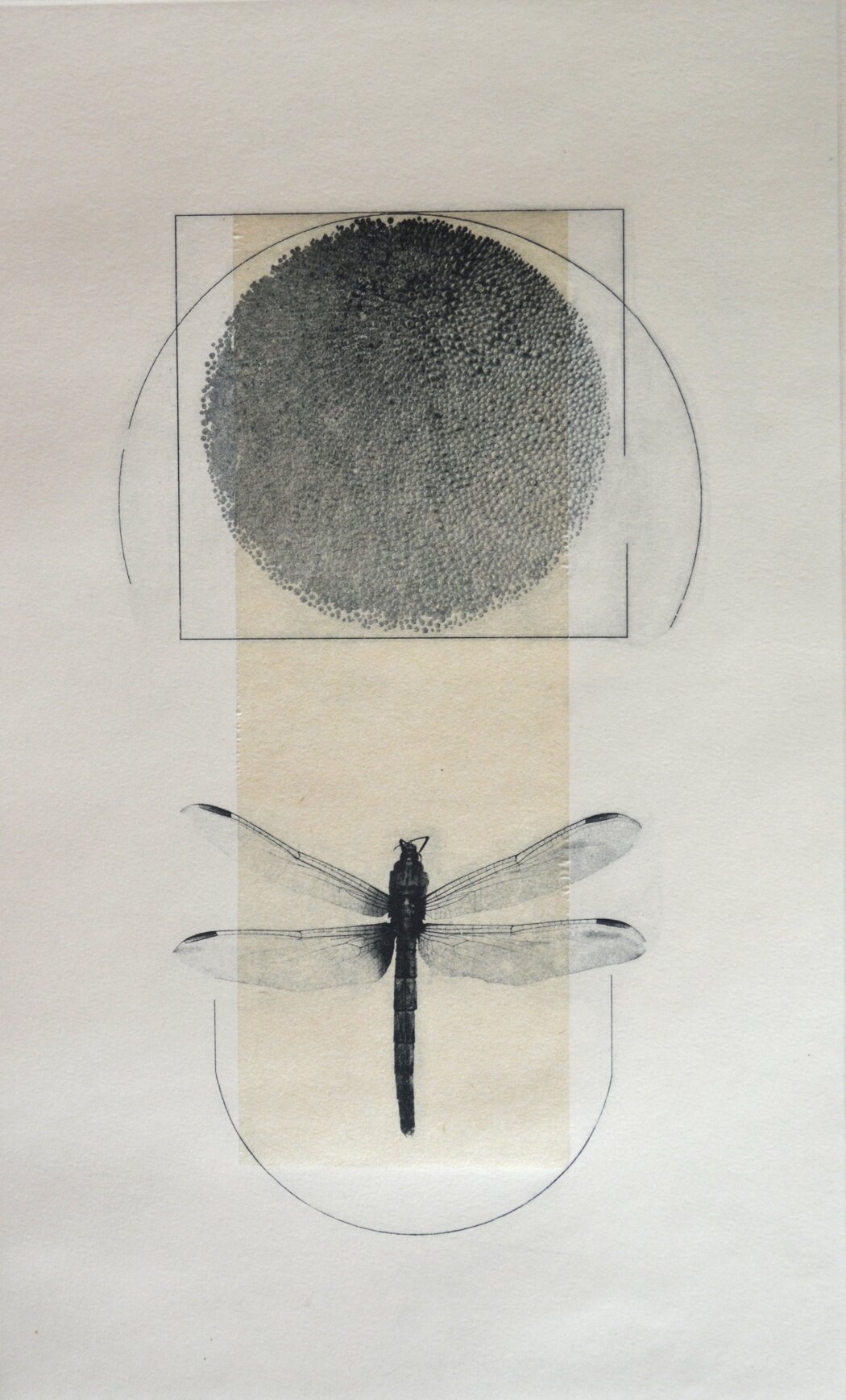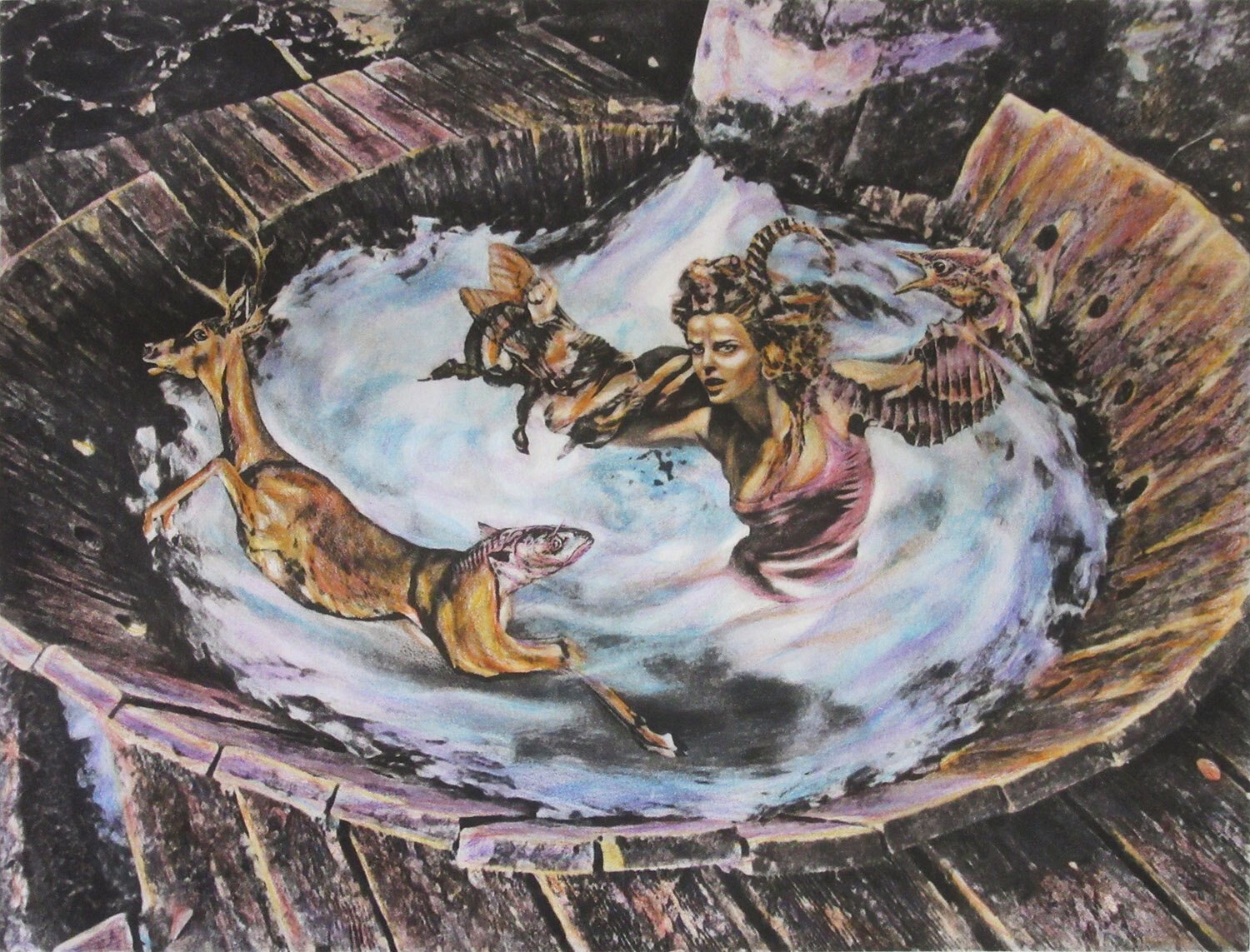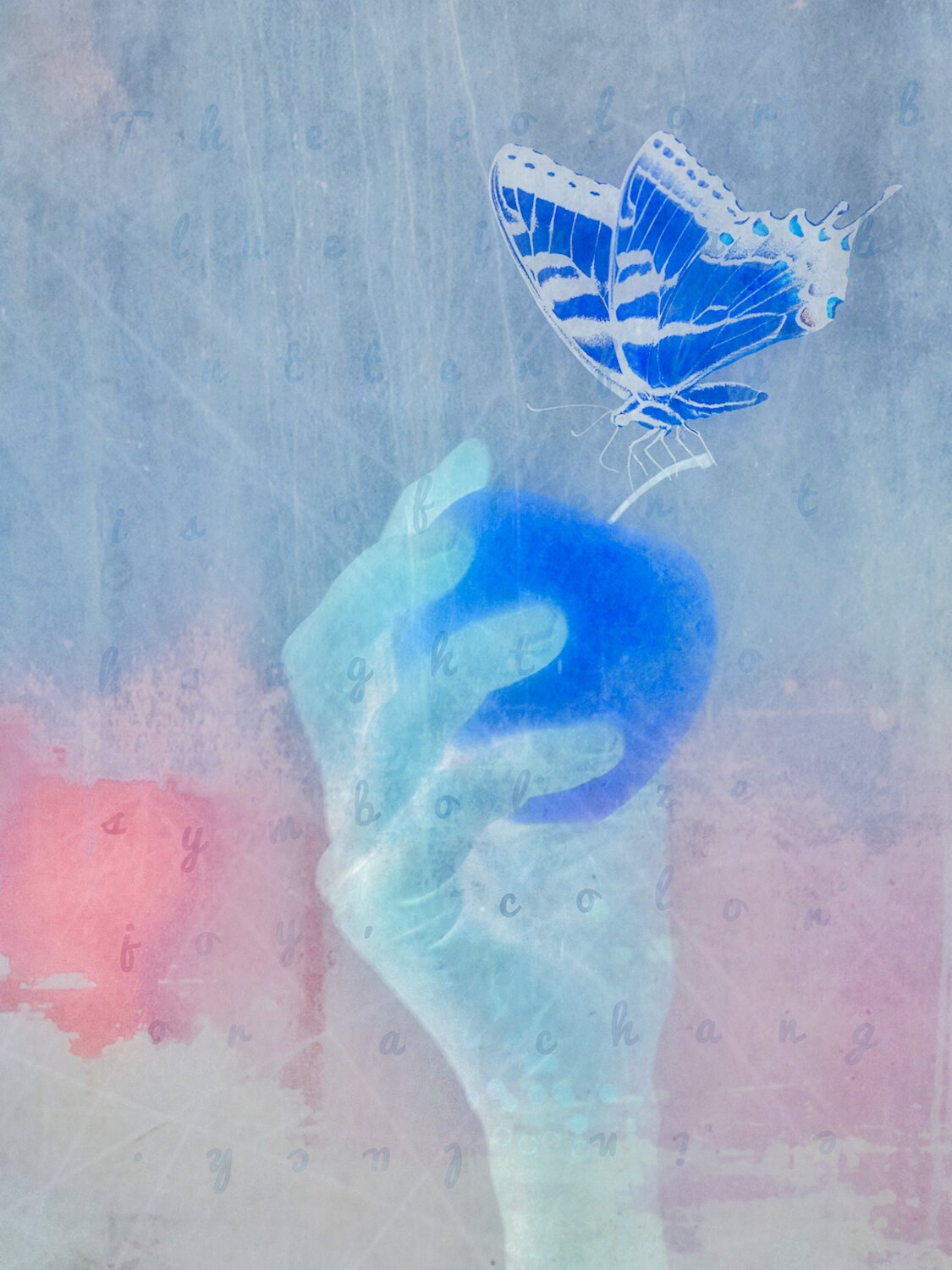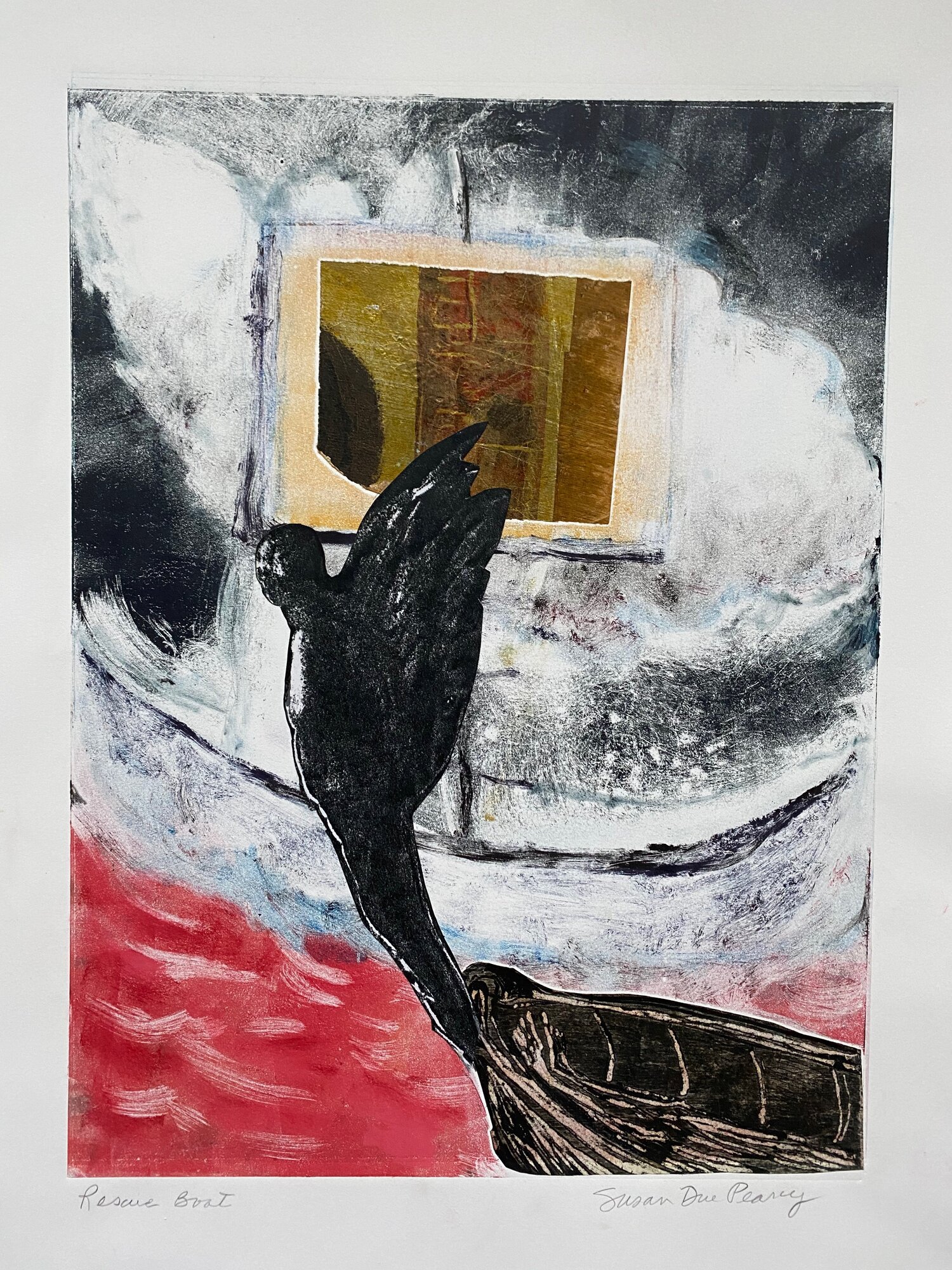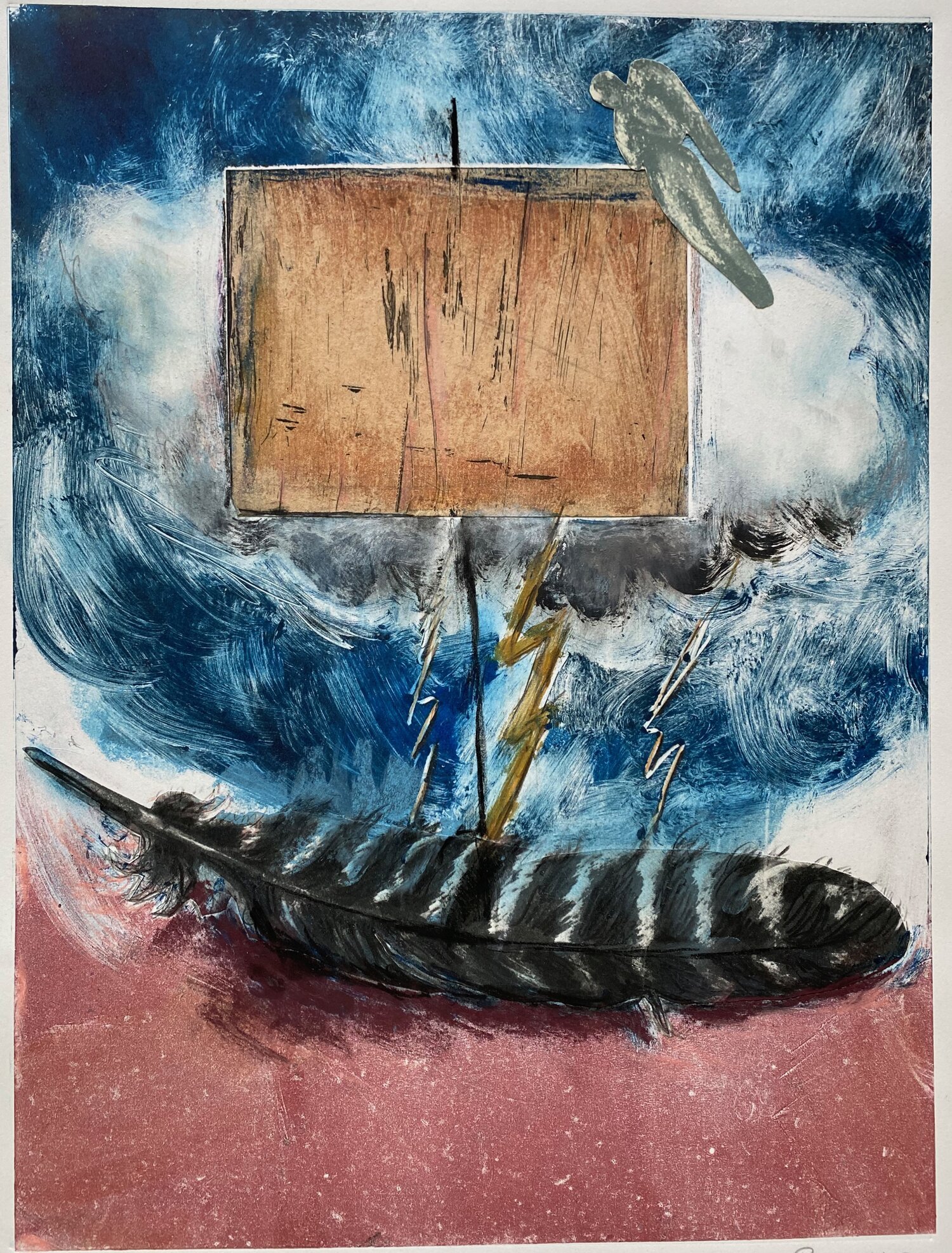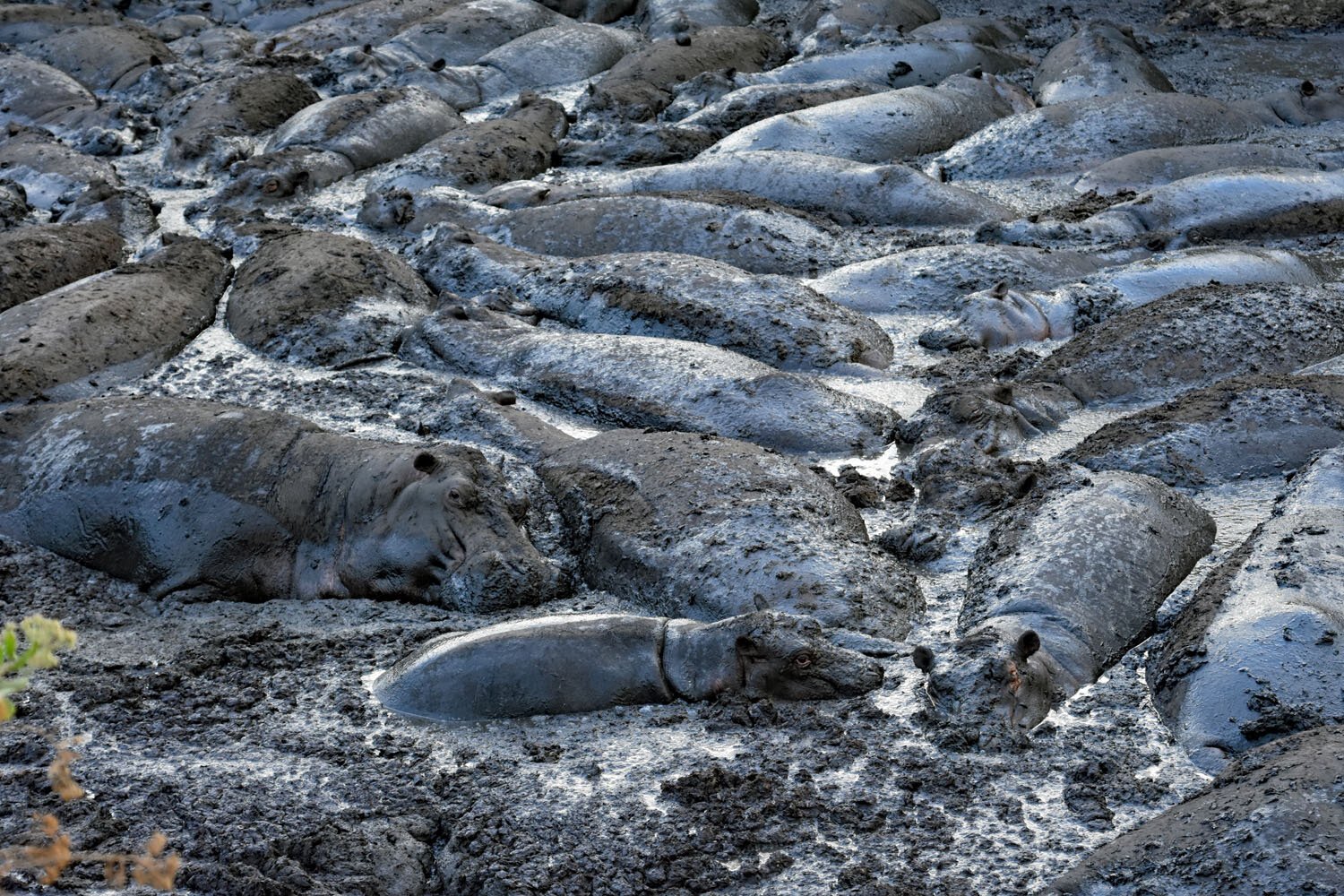Sea Change features guest artists as well as WPG printmakers and photographers, and focuses on climate change, and the present environment, whether political or sociological.
The Oxford English Dictionary defines Sea Change as a profound or notable change. Its poetic origin is derived from the play The Tempest, produced by William Shakespeare in 1610:
Full fathom five thy father lies:
Of his bones are coral made:
Those are pearls that were his eyes:
Nothing of him that doth face
But doth suffer a sea-change
Into something rich and strange.
The exhibition promises to be diverse and expressively dynamic.
Member Artists: Lila Oliver Asher • Robert Burgess • Clara Young Kim • Rosemary Cooley • Marie-B Cilia De Amicis • Amy Guadagnoli • Robert S. Hunter • Ron Meick • Nina Muys • Deborah Schindler • Matina Marki Tillman • Sandra Chen Weinstein
Guest Artists: Kerry McAleer • Karen Goldman • Terry Svat • Cecilia Rossey • Tjelda vander Meijden • Jenny Freestone • koreloy wildrekinde-mcwhirter • Virginia Lockman • Susan Pearcy • Camille Seaman
“Icebergs & Glaciers” by Camille Seaman
Ernest Schackleton, the Irish explorer who led three British expeditions to the Antarctic, left his men on a tiny spit of land just to the left of the glacier in this image.
“Ship of Theseus” by Amy Guadagnoli
We view our world as a Ship of Theseus, thinking we can replace, substitute, synthesize, and simulate our way around the problems of human-induced climate change, overpopulation, and the massive destruction to earth’s biodiversity. Only now are we awakening to the realization that what is lost is forever changed—as fires consume our forests, floods swamp our towns, hurricanes wash away our shores, and droughts parch our crops. We cannot hope to restore this ship to its original but we must mitigate the damage to salvage what remains.
“Disappearing Antarctic” by Tjelda vander Meijden
Sailing on a Russian Icebreaker to paint the Antarctic Peninsula, we encounter an enormously large fresh water Tabular iceberg. Slowly melting for many years, this iceberg was swept by the currents until it disappeared into the vast sea
“Disappearing Life 1” by by Tjelda vander Meijden
While traveling through Greenland, Iceland, and the High Arctic Islands, I witnessed the thawing permafrost which was a result of climate warming. Hunting by native Inuits becomes more difficult each year because of forced migration that has altered normal patterns of fish and wildlife.
“Stepping Out” by Terry Svat
Climate extremes are more evident in this already anxious era of Covid-19. It is not too late to become part of the efforts being made to counter the changes now taking place. Sometimes we feel that our hands are tied, as in “what can I do?” and therefore stay hidden, but we must step out of the fear and complacency.
“crankye salome's dance of the sevenne hankies” by koreloy wildrekinde-mcwhirter
~ made as a declaration of interdependence, parable, and testimony, with the aged and cranky salome in the role of the youthful and elder divine great mother goddess earth gaia, herself.
“pandora's earthe hemourage” by koreloy wildrekinde-mcwhirter
~ made as a mourning of the oil bleed in the gulf, and of those occurring everywhere on earth; the blood of the divine great mother goddess earth gaia, sacrificed and squandered by the most vicious, invasive, avaricious, and short-sighted species.
“Paradise in Peril” by Nina Muys
Rising tides and pollution have greatly affected the marshes around my studio at the Maryland Eastern Shore, still it remains a paradise that is in great need of protection.
“Desolation” by Sandra Chen Weinstein
The frozen river of silver white acidic mix of mud and water releases large bubbles of gas. The Salton Sea was an accidental paradise born in southern California from a failed irrigation canal dating from 1905. It was a very popular resort area until the 1970s but was all but abandoned after floods. Over time the inland sea became polluted with fertilizers, pesticides and salts from irrigation. Now it is a rapidly evaporating toxic salt sea with the ruin of local town’s resorts surrounding it. The area is a growing environmental hazard that threatens to damage marine and avian wildlife alike.
“Togetherness” by Matina Marki Tillman
Using a natural river-fed cleaning tub as the stage, I created the grim scene of a whirlpool that pulls down species into obliteration. It is a medley of the victimized, the extinct, and the mutated, all together with the accountable human.
“Eye of the Fire” by Matina Marki Tillman
This piece was inspired by the fire in Mati (“eye”), Greece in the summer of 2018, one of the two deadliest wildfires of the 21st century. Here I focused as well on the other species that are forced to share man’s tragedies, unnoticed casualties of both human negligence and a damaged climate.
“Amazonas Revisited” by Deborah Schindler
According to the “Oxford Portuguese to English Dictionary,” the Portuguese word “EXPLORAR” means to explore, extract; exploit; abuse immigrants, women or workers. All the meanings of the word “explorar” can be used to describe the history of the Amazon basin. Starting in the 1540s, European explorers came to extract minerals and raw materials from the rain forest. Operating mines and plantations they exploited indigenous peoples and enslaved workers. The 21st century continues to grapple with this legacy.
“Taste of Blue” by Virginia Lockman
Assuming that beauty and interest are everywhere, my photographic subjects are limitless. My recent work employs digital montage to create images that fall between the real and the imaginary.
“A Cabin in the Woods” by Robert Burgess
While the changes in the world’s climate can seem like an abstract notion to many, there are times when we are reminded, it will not be ignored.
“Boiling Point” by Kerry McAleer-Keeler
Part of the ongoing Boiling Points series (calling attention to social wrongs and women’s issues) the artist developed in reaction and support of the recent “Me Too” stories still coming forward in regards to the sexual and verbal exploitation of women by men of power. Boiling Point reflects an era of women that will no longer be silent. The print’s intention is to provide solidarity to the movement and to bring attention to this ongoing problem so that the next generation of women will feel empowered to speak out readily.
“S.O.S.: Save Our Coral Reefs” by Kerry McAleer-Keeler
Nearly 25% of all ocean species spend at least part of their lives on a reef for food and shelter. Sadly, elkhorn (Acropora palmata) and staghorn (Acropora cervicornis), two species of reef-building corals, have declined between 92-97% since the 1970’s. This collagraph print, S.O.S.: Save Our Coral Reefs was created to bring attention to these important ecosystems so they can be with us for future generations.
“Our Cup Runneth Over” by Robert S. Hunter
This reflects the current realities and dynamics of the American political/social environment.
“The Streets Will Never Be The Same - Chicago 1914” by Ron Meick
Street maps from a 1914 gazette are the basis of this edition of lithographs. Marks pierce the border and cloud the streets with thin washes. The recent protests and response have changed the way we view our collective culture and public spaces which have been scarred with racist statues and inequality. These city street maps from the past have changed and will never be used to navigate in the ways of the previous generations.
“Time Bomb” by Marie B. Cilia de Amicis
In Spite of constant warnings, one cannot stay under the umbrella and pretend it is not coming, happening....“We are the first generation to feel the effect of climate change and the last generation who can do something about it.” (Barack Obama). There is no planet B.....
“Illustrious Leader” by Rosemary Cooley
Torso of a Man Wearing Armor, is a Cyanotype on fabric with a Indigo Shibori dyed cotton cloth surround.
Photographed by Cooley at the Getty Villa in Malibu, CA. the figure is Roman (83-85 C.E.) created during the rule of Emperor Domitian, who came into his 15 year reign 67 years after the rule of Augustus Caesar, and exactly two years after the eruption of Mount Vesuvius (79 C.E.). and He must have had rebirth on his mind as he implemented an enormous building project to restore the damaged city of Rome.
Rome and Washington, D.C. are parallels, the seat of power of a Republic, turned into an Empire, and a city created to be a Democracy.
The torso, carved to honor the emperor, has seen better days, although still glorious. His missing hand signifies our temporary powerlessness during the present political regime which seeks to create an Empire, and our yearning for rebuilding the former glory of our Democracy.
“Comet Neowise” by Clara Young Kim
Visible in late July 2020, Comet Neowise is known for being the brightest comet in the northern hemisphere since Comet Hale–Bopp in 1997. Most comets are half water and half dust. Neowise has about 13 million Olympic sizes pools of water in it, and won’t be seen again for another 6800 years.
“Landscape, Twilight” by Cecilia Rossey
Stars swirl, waves splash, trees bend to the force of the wild wind. Nature’s choreographic mastery keeps pulse and harmony, yet rages at will. Scientists raise alarms and warn humans to keep balance or fecklessly perish. People are never too small to take their part seriously in this great dance.
“Hippos in Dried-Up Pool” by Karen Goldman
“Distressed Hippos in Drought” by Karen Goldman
During a drought in the Serengeti, Tanzania, hippopotamuses congregated in this shrinking pool of water reduced to mud and the animals’ waste. The degraded conditions and crowding are stressful for the hippos, and also harm fish and other water-dependent species. Droughts are becoming more frequent due to climate change.
“Going, Going... ?” by Robert S. Hunter
This reflects an admonition of what will occur if we fail to do nothing to protect our polar regions and their ability to moderate global warming.







